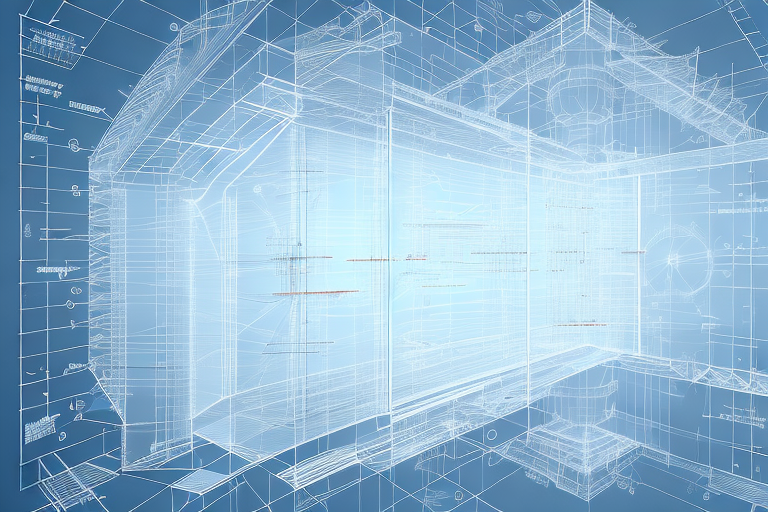When it comes to construction projects, selecting the right materials is essential for ensuring both strength and stability. One increasingly popular choice among builders and architects is the laminated veneer lumber (LVL) beam. In this article, we will dive into the intricacies of LVL beams, discussing their benefits, factors to consider, how to calculate their load capacity, safety considerations, and a cost analysis.

Understanding LVL Beams
Laminated veneer lumber (LVL) beams are engineered wood products made from multiple layers of thin wood veneers glued together. This process not only enhances their structural integrity but also allows for greater flexibility in design. LVL beams are commonly used in residential and commercial construction, providing robust solutions for various building applications. Their engineered nature means that they can be produced in a controlled environment, ensuring consistent quality and performance, which is a significant advantage over traditional lumber.
What are LVL Beams?
LVL beams are created by bonding together multiple layers of wood veneers, which are often made from high-quality timber. The layers are placed with the grain of each veneer parallel to the length of the beam, contributing to higher strength and stiffness. They are designed to perform in situations where traditional lumber may not be suitable, making them an ideal choice for load-bearing applications. Additionally, LVL beams can be manufactured to meet specific project requirements, including custom lengths and widths, which can greatly enhance the efficiency of construction processes.
Benefits of Using LVL Beams
There are several advantages to using LVL beams in construction projects:
- Strength: LVL beams provide superior strength compared to traditional timber, allowing them to support heavy loads.
- Stability: Unlike solid wood, LVL beams are less likely to warp, twist, or shrink, ensuring dimensional stability over time.
- Design flexibility: Their engineering allows for various sizes and lengths, making them suitable for a range of applications from residential to commercial buildings.
- Eco-friendliness: LVL beams make efficient use of timber resources, contributing to sustainable construction practices.
Moreover, LVL beams are also resistant to the effects of moisture and pests, which can be a significant concern in many building environments. This durability not only extends the lifespan of the structure but also reduces maintenance costs over time. In addition to their practical benefits, LVL beams can also contribute to the aesthetic appeal of a building. Their smooth finish and uniform appearance make them an attractive choice for exposed applications, such as beams and columns in open-concept spaces, where they can enhance the overall design of the interior.
Furthermore, the manufacturing process of LVL beams allows for the use of smaller, faster-growing trees, which can help alleviate some of the pressure on old-growth forests. This sustainable approach aligns with the growing demand for environmentally responsible building materials, making LVL beams a popular choice among architects and builders who prioritize eco-friendly practices. As the construction industry continues to evolve, the use of engineered wood products like LVL beams is likely to increase, paving the way for innovative building solutions that meet both structural and environmental needs.
Factors to Consider When Choosing LVL Beams
When selecting LVL beams for your construction project, there are several critical factors to consider to ensure you make the best choice for your needs.
Project Requirements
Identify the specific requirements of your project, including the load-bearing capacity needed, span lengths, and any architectural considerations. Knowing these details will help you determine the right dimensions and style of LVL beams. It’s also essential to consider whether the beams will be used in a load-bearing capacity or as part of a decorative feature. For instance, if the beams are part of an open floor plan, their visual appeal becomes just as important as their structural integrity. Additionally, understanding local building codes and regulations can also influence your choices, as certain areas may have specific requirements for beam installation and performance.
Beam Sizes and Types
LVL beams come in various sizes and profiles. Common sizes include widths ranging from 1.75 inches to 24 inches and depths from 3.5 inches to 18 inches. Be sure to choose a size that complements your project’s specifications, balancing strength with aesthetics. Additionally, familiarize yourself with different types of LVL beams; some are designed for specific applications like headers, joists, or rafters. The versatility of LVL beams allows for creative architectural designs, enabling builders to create expansive spaces without compromising on structural support. It’s also worth noting that custom sizes can often be ordered, providing even greater flexibility in design.
Material Quality and Durability
Not all LVL beams are created equal. Investigate the material quality and manufacturing processes of the LVL beams you are considering. High-quality beams are made from dense wood species and undergo rigorous testing to meet industry standards. Look for beams that offer resistance to moisture, pests, and other deteriorating factors to ensure the longevity of your construction. Moreover, consider the environmental impact of your materials; opting for beams sourced from sustainable forestry practices can enhance the eco-friendliness of your project. Some manufacturers also offer beams treated with fire retardants, which can be a crucial consideration in areas prone to wildfires or where building codes demand enhanced fire resistance.
Calculating the Load Capacity of LVL Beams
An essential step in the use of LVL beams is understanding their load capacity. This calculation ensures that the beams can adequately support the weight of the structure or materials applied to them.
Understanding Load Capacity
Load capacity is the maximum weight an LVL beam can support without failure. It is determined by several factors, including the beam’s size, material properties, length, and the type of load applied (static or dynamic). Engineers often use specific codes and standards to calculate this capacity, making it crucial to follow industry guidelines closely when planning your project. Additionally, environmental factors such as humidity, temperature fluctuations, and exposure to elements can affect the performance of LVL beams over time, making it essential to consider these variables during the design phase.
How to Calculate Load Capacity
To calculate the load capacity of an LVL beam, you’ll typically consider the following steps:
- Determine the total load that the beam will need to support, including live loads (occupants, furniture) and dead loads (structural elements).
- Use manufacturer specifications to find the allowable bending stress and modulus of elasticity for the specific LVL beam you are using.
- Calculate the moment of inertia for the beam based on its dimensions.
- Utilize bending equations to determine the maximum allowable load.
For complicated structures, consultations with a structural engineer may be necessary to ensure accuracy and compliance with building codes. Furthermore, it is important to document all calculations and assumptions made during this process. This documentation not only provides a reference for future projects but also serves as a safeguard in case of inspections or audits. Understanding the nuances of load distribution, including how loads may shift or change over time, is also vital in ensuring the long-term stability and safety of the structure.
Safety Considerations When Using LVL Beams
Safety is paramount when working with LVL beams. Awareness of best practices regarding handling, installation, and maintenance is essential for ensuring the wellbeing of workers and the integrity of the structure.
Handling and Installation Safety
When handling LVL beams, make sure to use appropriate lifting techniques to prevent injury. Due to their weight and size, it may be necessary to use lifting equipment or team coordination. Ensure that all workers involved in the installation are adequately trained in safety procedures and that proper personal protective equipment (PPE) is used throughout the process. Additionally, it is vital to assess the work environment for any potential hazards, such as uneven ground or overhead obstructions, which could pose risks during the lifting and placement of these beams. Establishing a clear communication protocol among team members can further enhance safety, ensuring that everyone is aware of their roles and any changes in the plan during the installation process.
Ongoing Maintenance and Inspection
Regular inspections of LVL beams are crucial for identifying any signs of wear, damage, or potential issues. Look for signs of moisture, warping, or pest infestation and address any concerns immediately. Keep documentation of all inspections and maintenance performed, as this can help maintain structural integrity and provide valuable information for future projects. Furthermore, it is advisable to create a maintenance schedule that aligns with the specific environmental conditions and usage patterns of the structure. For instance, areas with high humidity or significant temperature fluctuations may require more frequent inspections to ensure that the LVL beams remain in optimal condition. Engaging a qualified structural engineer to conduct periodic assessments can also provide an expert perspective on the condition of the beams, ensuring that any underlying issues are addressed before they escalate into more significant problems.
Cost Analysis of LVL Beams
Understanding the cost implications of using LVL beams is essential for budget-conscious projects. Both initial and long-term costs should be considered to gauge overall value.
Initial Purchase Costs
The initial costs of LVL beams can vary depending on factors like size, type, and quality. Generally, they can be more expensive than traditional lumber upfront but often prove to be more cost-effective when considering their performance. Acquiring quotes from suppliers can help you understand the price range for your specific project requirements. It’s also important to factor in the cost of transportation and handling, as LVL beams can be heavier and may require special equipment for delivery and installation. This can influence your overall budget, especially for large-scale projects where multiple beams are needed.
Long-Term Costs and Value
While the initial investment in LVL beams may be higher, their durability and strength can lead to savings over time. Consider costs associated with maintenance, repairs, and potential replacements of lesser materials. Additionally, the enhanced energy efficiency and structural integrity can lead to lower energy costs and improved overall value for the property. LVL beams are less prone to warping, splitting, or twisting compared to traditional lumber, which can significantly reduce repair costs over the lifespan of the structure. Furthermore, their consistent quality and performance can minimize the risk of structural failures, providing peace of mind for homeowners and builders alike.
Moreover, the sustainability aspect of LVL beams should not be overlooked. Many manufacturers source their materials from sustainably managed forests, which can contribute to a lower carbon footprint for your project. This eco-friendly approach not only supports responsible forestry practices but can also enhance the marketability of your property in an increasingly environmentally conscious market. As more buyers look for sustainable building practices, investing in LVL beams may yield a greater return on investment when it comes time to sell or rent the property.
In conclusion, carefully choosing the right LVL beams for your project can result in a successful, safe, and sustainable build. By understanding these factors, calculating load capacities, prioritizing safety, and conducting a thorough cost analysis, you can ensure that your investment meets both current and future needs.

